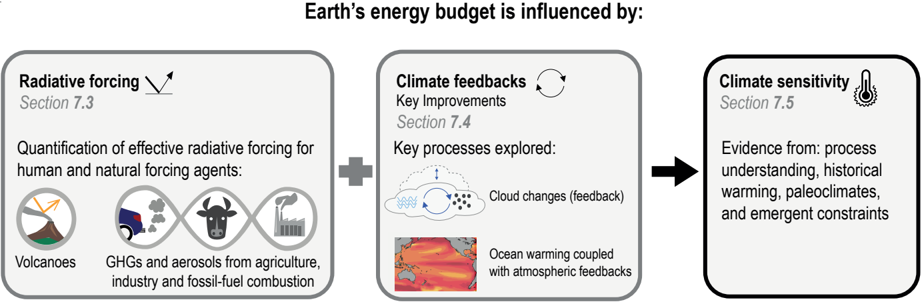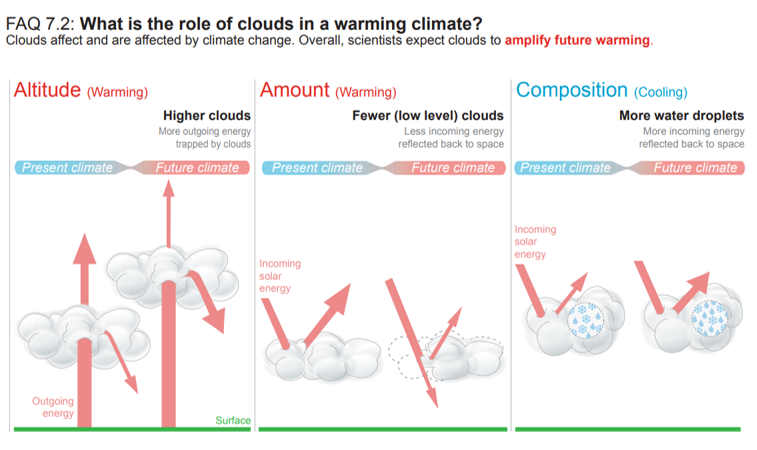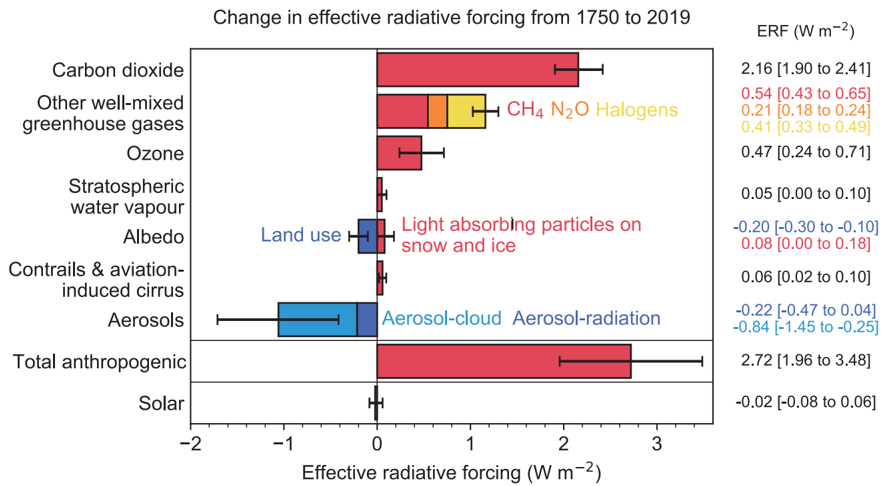In addition to natural causes, there are anthropogenic causes of climate change, such as carbon dioxide emissions from burning fossil fuels (e.g., coal, oil, and natural gas). Other causes are energy production and the emission of greenhouse gases, such as methane from livestock, natural gas drilling, and burning fossil fuels. Radiative forcing is a measure that quantifies the contribution of these factors to climate change, as discussed in the next section.
The mechanism that accelerates or decelerates the change is called feedback. Positive feedback accelerates warming, while negative feedback slows it. For example, warming melts sea ice, land ice, and snow. Exposed land and sea absorb more sunlight than snow and ice surfaces, raising global temperatures and accelerating warming. This is snow/ice albedo feedback. Also, as the Earth's temperature rises, the amount of water vapor in the atmosphere increases, and since water vapor is a greenhouse gas, it accelerates global warming. This is called water vapor feedback. As various feedback progress, temperatures and weather patterns settle into a different state, and the climate enters a new one.
Another common feedback is cloud feedback. Clouds, too, change as global temperatures rise and alter the climate. The next section discusses how clouds are thought to change with warming.


